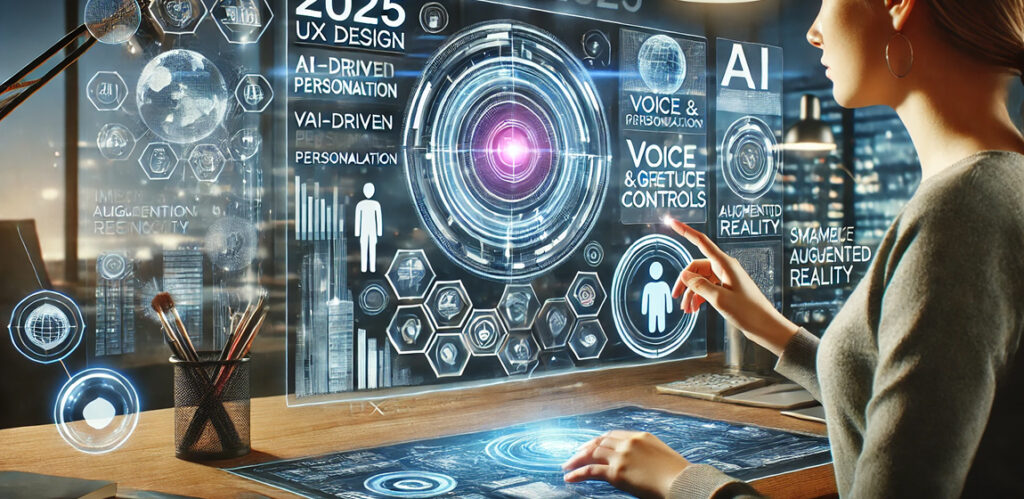UX is changing fast as technology gets smarter and users expect more. By 2025, design will be all about personalization, immersion, and AI-driven experiences. Here are the biggest trends shaping the future of UX and what designers should keep an eye on.

AI-Powered Personalization.
AI is making UX smarter and more personal. By 2025, interfaces will adapt in real-time to how users behave and what they like. Think smarter chatbots, spot-on recommendations, and UIs that adjust to fit each person’s needs.
Voice and Conversational Interfaces.
Voice interactions will become even more intuitive, reducing reliance on traditional screen-based designs. Users will expect seamless voice navigation in apps, smart devices, and even enterprise software, making accessibility and natural language processing (NLP) critical for UX designers.
Immersive and Spatial Design.
With the rise of augmented reality (AR) and virtual reality (VR), UX will extend beyond flat screens. More applications will incorporate 3D interfaces, holographic elements, and spatial interactions, making user engagement more immersive. Designers will need to rethink navigation and usability in digital-first environments.
Ethical and Inclusive Design.
As technology shapes society, there is growing awareness around ethical UX practices. In 2025, companies will prioritize accessibility, data privacy, and user well-being in their designs. Expect more dark pattern regulations, improved assistive technologies, and ethical AI guidelines.
Minimalist and Zero UI Experiences.
The concept of “invisible” UX will grow, with minimal interfaces and context-aware interactions that require little to no manual input. Gesture-based controls, biometric authentication, and automated workflows will reduce friction and streamline user journeys.
Seamless Cross-Platform Experiences.
Users expect seamless transitions between devices, whether it’s a smartwatch, laptop, AR headset, or IoT device. In 2025, UX designers will focus on cross-device continuity, ensuring a frictionless experience across different platforms.
Neuroscience and Emotion-Based Design.
Advancements in brain-computer interfaces (BCI) and emotion-detection technologies will influence UX. Applications may adapt based on user emotions, stress levels, or cognitive load, making interfaces more intuitive and user-friendly.
Faster Prototyping with AI and No-Code Tools.
AI-powered design tools and no-code/low-code platforms will accelerate UX workflows. Designers will spend less time on manual tasks and more time on user research, strategy, and innovation, allowing for rapid prototyping and iterative design.
Sustainable and Eco-Conscious UX.
Sustainability will play a bigger role in UX design, with a focus on energy-efficient websites, reduced digital waste, and ethical design practices. Companies will incorporate green UX strategies to optimize performance while minimizing their environmental footprint.
Hyper-Local and Context-Aware Design.
UX will become even more location-specific and adaptive. Apps and digital products will leverage contextual data—such as weather, user habits, and real-time location—to provide personalized and highly relevant experiences.
The future of UX in 2025 will be smarter, more intuitive, and deeply user-centered. As AI, voice, AR, and ethical considerations evolve, UX designers must stay ahead by embracing new technologies and prioritizing seamless, inclusive, and personalized experiences.